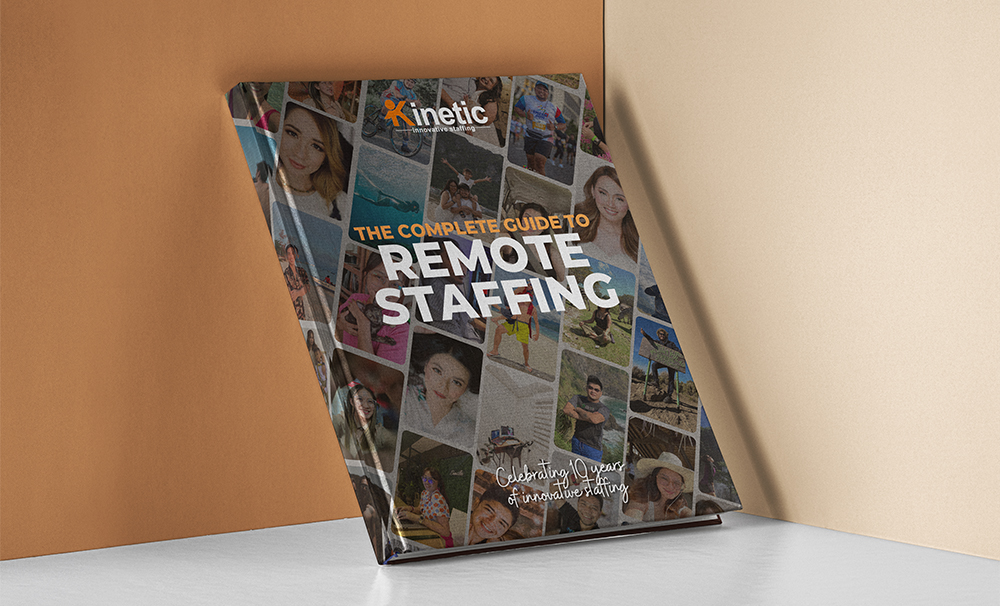The Virtues and Vices of the Minimum Viable Product (MVP)
We live in a world where speed is everything. And I mean everything.In fact, how many sports can you think of where the slowest competitor is celebrated? Most sports are races, and whoever crosses the finish line first, wins.
Many of the games we played as kids were races, and that’s why they were often punctuated with tumbles and bruises.
We place a high premium on speed. There’s only a microsecond time-difference between the winning horse and the second placer in the Melbourne Cup each year. But the prize money never reflects this ($4.4 million vs. $1.1 million in 2019). It’ll make a grown man lose hair for losing by a hair.
The “He who is fastest, wins…Duh” ethos is extended to business…and to the business of developing software and apps. In a society that believes “Time Is Gold,” the faster you can get to market, the better your chances of cleaning the table.
And so comes the concept of the Minimum Viable Product (MVP).
The concept was popularised by Eric Ries and is one of the pillars of his book “The Lean Startup”—a sort of a dogma and gold standard for tech entrepreneurs. The idea is that one doesn’t really need to overdesign or overload an initial product with all the bells and whistles (a.k.a. features), take years to develop the whole thing only to find that nobody in the market even wants to touch it.
That’s time and money down the drain.
A startup, with limited cash and is in a hurry to get to market, instead develops a “good enough” product, say an app, throws it to the marketplace, lets users interact with it, and gets the feedback necessary to do better in the next iteration.
The concept is sound, and its followers, many. The minimum viable product model was used by once-tiny-but-now mammoth companies like Amazon and Airbnb. Jeff Bezos started by selling books. Amazon had a very simple website and was actually headquartered at Bezos’ garage in Bellevue, Washington.
Jeff Bezos started Amazon in his garage
Revenue in year 1: $0 (pre-launch)
Revenue in year 10: $7 billion
Revenue in year 20: $89 billion
Revenue this year: $279 billion
(estimate) pic.twitter.com/kfUco3tiYU— Jon Erlichman (@JonErlichman) September 21, 2019
But one thing that Amazon was very good at was getting data from its customers, and by combing through data, Amazon was able to expand into many products and become this massively successful retailer.
Amazon grew, from a minimum viable product to one gunning to have an Alexa in every home.
The major benefits of the MVP are easy to see.
Virtues of an MVP
It’s Cheaper
It’s cheaper because you skip out on developing those app features that clients might never use. Imagine Microsoft Word never actually developing their Office Assistant (remember that overeager paperclip?) or the thousand other functions that you didn’t even know existed in Word.
With MVP, start-ups go to the core features of their applications and work on that. The rest can come later after getting signals from paying customers.
It’s Faster
As a consequence of MVPs’ simple and streamlined philosophy, the development cycle turns faster. A start-up can not only get to market on a lower budget–they can also do it in record time.
The speed is counterbalanced by the number of iterations required by the software or app. Developers are taking a long term view and understand that they can never make anything so perfect that the first release is the final version.
It Accounts For Customer Input
MVPs place primacy and consideration to customer feedback, as well as learning and testing. Consumers are where “the rubber meets the road” and designers are well-advised to listen to consumers. They, for example, could be using the app or software in ways never contemplated or planned by the design team.
The team learns, tests, and retests, and the market is rewarded with a better product in the near future. It’s a win-win!
That said, the MVP concept has become a movement in the world of tech startups and has its share of fans and success stories. But over the years, people are beginning to realise that MVPs have their own share of unique challenges.
Vices of an MVP
Best to watch out for these:
“Minimum” can actually be “mediocre.”
The main idea is solid and noble: to have a bare-bones, but working, product in the market. But over the years, companies and startups have slid into releasing MVPs that a Harvard Business Review article gamely refers to as having “Mediocre Value Proposition.”
The execution of a sterling idea is at issue, and what gets delivered is a lemon. (And they excuse it as “continuous innovation.”)
With a mediocre product, how can you actually rise from the noise? Because one of the characteristics of the app and software market today is that it’s beginning to sound like an actual market. It’s very noisy as thousands of startups are throwing their spaghettis on the wall…seeing what sticks.
In a sea of products (ostensibly waiting to be great), yours could drown in a sea of mediocrity never reaching its full potential.
Many times, you don’t get a second chance.
Have you really heard a customer say, “Gee, that first iteration of your app sucked. Big time! But see you in six months when you release a better version! I believe in you guys. You can do it!”
Customers have a totally different perspective from developers. These days, nobody really hangs around for products to get better. Unless you wow them enough in the first round, they would have already forgotten you and have moved on to the next thing. They wouldn’t give you the time of day, and you wouldn’t get the data that you need.
So there must already be an early merit to your product or app that makes people genuinely care for it.
A weak MVP can destroy your brand. And damaged customer relations is not good for any business.
Customers don’t know what they want.
We say that “The customer is always right,” and there’s truth to that. Asking for customer feedback and learning from them is a good thing. But did you know that Steve Jobs, the guy who used to work at Apple, didn’t really believe in market research and asking the customer what products they wanted?
Customers don’t know what they want…until you bring the shiny new toy in front of them, Jobs believed.
How many focused group discussions do you think would be able to come up with revolutionary products like the iPhone and the iPad? (These were far beyond what customers thought was possible at that point.)
Instead, it took the vision of one man and, the buy-in of the whole company, to churn out products that blow everyone’s expectations.
Sometimes, MVPs become self-limiting beliefs. They become excuses. Yes, listening to customers and getting data is a good thing, but the vision and the fire should always come from the team. That’s not something that you would want to leave in the fickle hands of customers.
MVPs don’t necessarily excite investors.
As a startup, you might be considering funding. Well, venture capitalists are becoming smarter with their money. Instead of backing MVP’s, many are coming in at later stages of product development and betting on products that have proven track records.
Besides, you can’t really stir a room of potential investors by saying, “This thing’s still in the initial stages of development. We’re gonna fix up all the bugs at a later date.”
Investors are risk-takers, but they’re not doing that just for the sake of an adrenaline rush. At the end of the day, they need to look at their bottom lines and feel that they’ve made the right decisions.
MVP’s present a higher risk to investors. You might have demonstrated your passion during the pitch, but unless you’ve shown a solid, tried and tested MVP, you might get a lukewarm response from investors.
Knowing both the virtues and vices of MVPs, what’s a startup to do?
This Person Could Sink or Save Your MVP
Well, here’s where we introduce an unsung hero in all of this. You might have not considered him or her important, or you might have simply passed him off as an ordinary member of your team. But the guy can sink or save your ship.
I’m talking about your Software Tester. He’s that vital cog who looks for bugs, runs, and makes your MVP sparkle. Before your little company deals with users, you have an in-house team member whose sole purpose is to make sure that this doesn’t happen to you—that little voice that says, “Our interface needs a little work” or “The app doesn’t really do what we say it does.”
This is the person who allows you to reap all the benefits of the MVP (its virtues) while protecting your downside (its vices).
Your software tester, if good, can save your little startup from all the needless complications of deployment. If not, he can sink your whole enterprise, and you would just have to chalk it up as the statistic, saying, “Well 90% of startups fail.”
Our job at Kinetic is to help startups become part of the successful 10%.
We can get you not just the software testers that can right your ship, but a complete and topnotch software development team.
We have access to premium tech talent at a price point ideal for startups. How? By working with offshore professionals from top-skilled Asian countries, Kinetic is able to give companies the best of both worlds and help them compete in an era of high expectations and fast development cycles.
Kinetic Innovative Staffing has been providing hundreds of companies in the Asia Pacific, North America, and Europe with professionals working remotely from the Philippines since 2013. Get in touch to know more.




